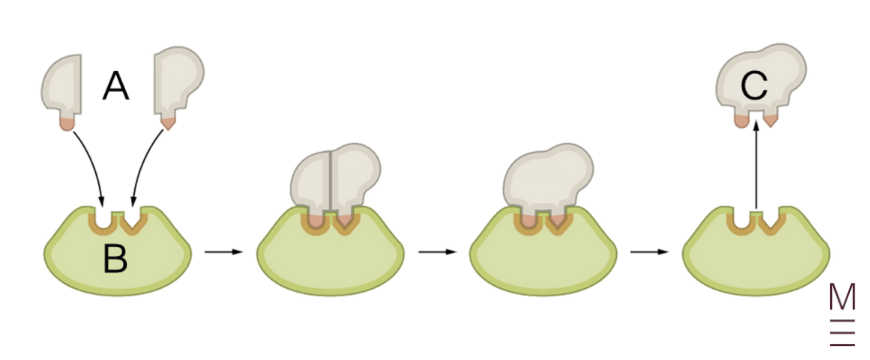Have you ever mastered Yr 11 Biology Module 1? Check your self with these 10 observe questions.
You’ll find the solutions on the backside of the web page.
Questions
Query 1
Define the three tenets of classical cell concept.
Query 2
Establish THREE variations between eukaryotes and prokaryotes.
Query 3
Clarify how the construction of mitochondria pertains to its perform.
Query 4
True or false?
Small, non-polar and impartial substances resembling water, carbon dioxide and oxygen transfer via the phospholipid bilayer through lively transport.
Query 5
Define how vegetation acquire vitality.
Query 6
Establish the buildings labelled A, B and C on this lock and key mannequin diagram.

Query 7
Define the primary variations between cardio and anaerobic respiration.
Query 8
True or false?
The motion of water from areas of excessive focus to areas of low focus known as osmosis.
Query 9
A scientist needs to visualise the element of organelles inside a cell.
Which of the next is the very best method to make use of?
(a) Transmission electron microscopy
(b) B. Scanning electron microscopy
(c) C. Staining
(d) D. Section-contrast microscopy
Query 10
True or false?
Endocytosis is the method that transports supplies resembling hormones and waste merchandise out of the cell.
Solutions
Query 1
- Cells are the elemental unit of life
- All organisms are made up of a number of cells
- All cells come from pre-existing cells
Query 2
Eukaryotes
- DNA is saved within the nucleus.
- Have membrane-bound organelles.
- No cell wall (besides in vegetation, fungi and a few protists).
Prokaryotes
- DNA is free-floating within the cytoplasm.
- No membrane-bound organelles.
- Have a cell wall.
Query 3
The inside mitochondrial membrane has many folds referred to as cristae that enhance its floor space whereas sustaining a comparatively small quantity.
As mobile respiration reactions happen on the inside membrane, excessive floor space maximises the speed of mobile respiration to effectively produce ATP and meet the vitality demand of the cell.
Query 4
False
Query 5
Vegetation are autotrophs that make their very own meals via the method of photosynthesis.
Photosynthesis is a two-step course of:
- The light-dependent stage which requires daylight and happens within the thylakoid membrane and the light-independent stage which doesn’t require daylight and takes place within the stroma fluid of the chloroplast.
- Photosynthesis converts water and carbon dioxide into oxygen and glucose which is used as a supply of vitality.
Query 6
A = Substrates
B = Enzyme
C = Product
Query 7
- Cardio respiration requires oxygen, however anaerobic respiration doesn’t.
- Cardio respiration can produce as much as 36 ATP from one glucose molecule, however anaerobic respiration produces solely 2.
- Cardio respiration is accomplished throughout the mitochondria, however anaerobic respiration isn’t.
Query 8
True
Query 9
(a) Transmission electron microscopy
